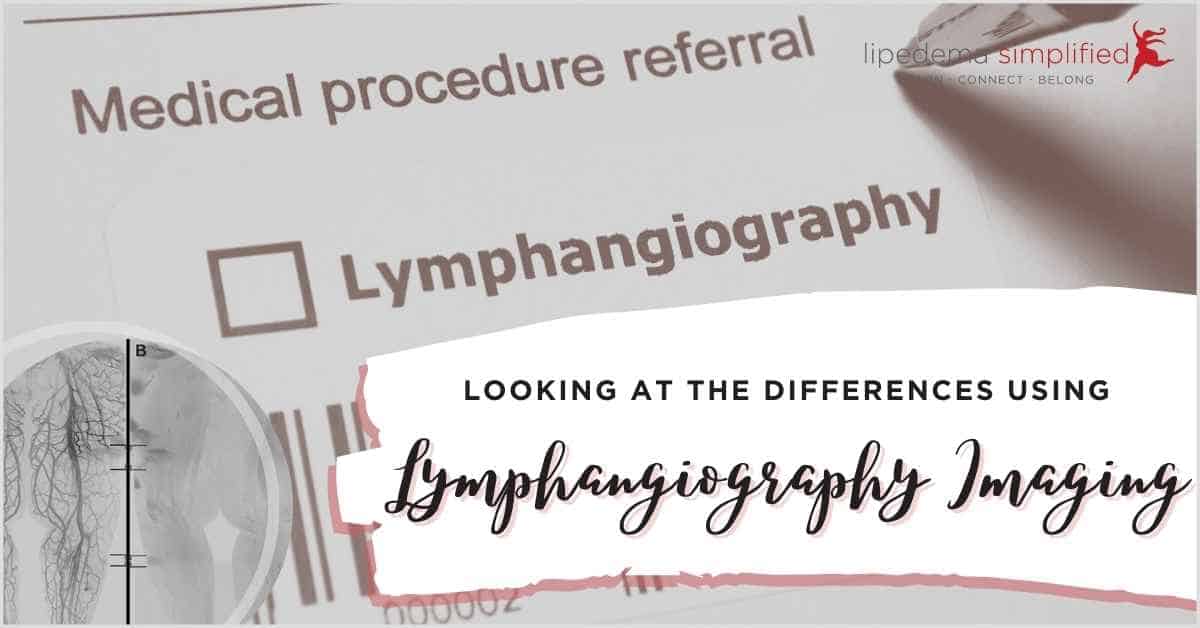
Today’s blog focuses on a study by researchers from Vanderbilt University in Tennessee in the US. It is entitled, Subcutaneous Adipose Tissue Edema in Lipedema Revealed by Noninvasive 3T MR Lymphangiography and was published in the peer-reviewed journal Journal of Magnetic Resonance Imaging in May 2022.
This is a prospective cross-sectional study that sought to identify differences between lipedema, lymphedema, and obesity by MR lymphangiography imaging. The researchers hypothesized that using this type of imaging would show distinct differences between these conditions. They also expected that edema would be found in lipedema fat through this imaging before it’s visually obvious by other means.
This imaging method is very effective with lymphatics as it is more responsive to the slower-moving lymph, compared to the speed of blood circulation. This makes this method more adept at contrasting lymph from surrounding tissues to allow it to be better visualized.
Who were the participants in this study?
A total of 48 participants were enrolled in this study. 14 were diagnosed with lipedema, 12 with lipedema and lymphedema, 8 with cancer-related lymphedema in one or both legs, and 14 female controls that didn’t have either lymphedema or lipedema.
The entire cohort had an average age of 45 and an average BMI of 29.6. Although the 4 groups tended to be very similar, those with cancer-related lymphedema had a higher average age of 54 and had the lowest average muscle area in the affected legs. Those with lipedema and lipolymphedema had a higher pain level, leg circumference, and subcutaneous fat tissue than the other groups. A majority of participants in the lipedema and lipolymphedema groups were in stage 2, using a 3-stage model. Lymphedema participants were primarily in stage 1, also on a 3-stage model.
What inclusion and exclusion criteria were used?
In order to be included in this study, participants had to be female. In order to be included in each of the study groups, it was necessary to have a clinical diagnosis of lipedema, cancer-related lymphedema, lipedema with lymphedema, or be designated as a healthy control.
On the other hand, participants were excluded from this study if they had a BMI above 40, uncontrolled high blood pressure, diabetes, rheumatoid arthritis, chronic kidney disease, current skin infections, or any other signs of acute inflammation. It’s not that these other conditions don’t occur with lipedema or lymphedema, but merely that the researchers were trying to remove any possible other reasons for having edema that could muddy the results of this study.
What methods were used?
All participants in the study underwent a full-body MRI and then imaging of the calves using both 2D and 3D MR lymphangiography without tracer. The imaging was reviewed independently by three radiologists who were blinded as to which group each participant was in.
What were the results?
There was excellent agreement among the radiologist as to the features that were observed or not observed in each participant. Participants in the lipedema, lipolymphedema, and lymphedema groups all had elevated levels of edema in subcutaneous adipose tissue and lymphatic impairment compared to age- and BMI-matched healthy controls. Lipedema participants had evidence of subcutaneous adipose tissue fluid even if they didn’t have overt clinical signs of lymphedema.
What did the researchers conclude?
The researchers believe that the MR lymphangiography imaging in this study indicates the presence of edema and excess fluid load in lipedema tissues even before overt signs are visible by other means, which suggests that interventions such as manual lymph drainage, compression, and pneumatic pumps are indicated much earlier in the progression or natural history of the disorder.
They state that this imaging is already offered as surveillance of patients with cancer-related lymphedema and could also be offered to patients with lipedema. It is non-invasive and offered at many imaging centers. In this way, earlier detection of lipedema and associated tissue edema could be diagnosed, and the appropriate treatment could be offered.
Other papers have stated that any edema associated with lipedema is due to the comorbidity of obesity, but earlier studies have shown that lymphatic dysfunction does not typically occur consistently with obesity until BMI levels exceed 40. All participants in this study had a BMI of less than 40. Further, the participants in the lipedema group with a BMI less than 30 (BMI >30 designates obesity), had lymphatic dysfunction and increased fluid load. In this way, MR lymphangiography can also offer a method to distinguish between lipedema and obesity.
What are my thoughts about this study?
This study is important for women with lipedema not only because it offers an imaging method that’s effective for differentiating between conditions often confused with lipedema, but also because this imaging can offer early detection of lipedema and justify the inclusion of intervention options that treat edema. Other recent papers have stated that there is no edema in lipedema, so therefore no intervention, such as MLD should be provided for a patient with lipedema. This study adds further evidence that by using imaging techniques with higher sensitivity, we do indeed see edema in lipedema tissues. This may help lipedema patients get the proper treatment earlier, which may ultimately lead to better management of their condition.
~ Leslyn Keith, OTD, CLT-LANA
Board President, Director of Research | The Lipedema Project
